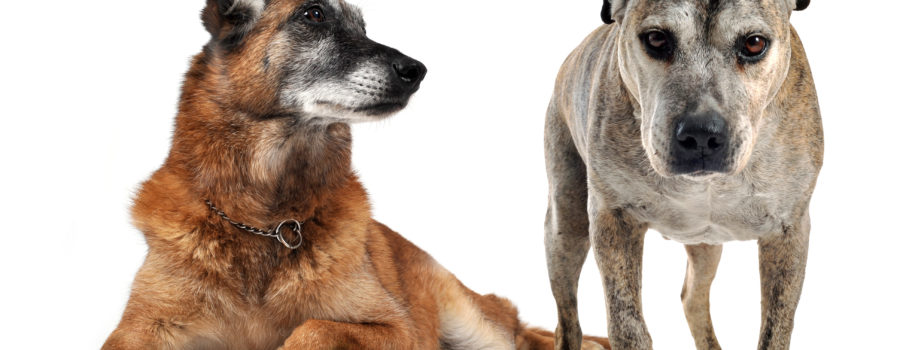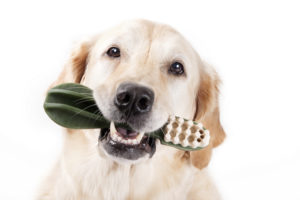1. If a dog is happy, he’ll generally look relaxed: his muscles will be relaxed and his weight will be balanced on four feet. A scared dog, on the other hand, will be hunched or look smaller, or lower his body to the ground. He may also lower his head or center his weight on his back legs, as if to run away.
2. Sometimes a submissive canine may resemble a scared dog because he makes his body small, so he doesn’t look threatening. A submissive dog may also cower closer to the ground, but his head may be raised if he’s greeting another dog or a person. If a dog is acting dominant, he’ll make his body appear bigger, which looks more menacing. His muscles may be tense while standing erect, sometimes on his tiptoes. His head and neck may be raised as well. If he’s aggressive, he may lunge forward on his front legs, ready to charge forward.
3. If a dog is relaxed and happy, the eyes should look normal: either round or almond shaped. If a dog is frightened, his eyes may appear either smaller or larger than usual. An aggressive dog usually has larger eyes than normal. If a dog is in pain or discomfort, he may appear to be squinting. A submissive dog may appear to be smiling and also squinting.
4. Dogs rarely look each other directly in the eyes because it’s considered a threatening behavior. However they have learned that it’s okay to do that with humans. Often your dog may gaze into your eyes with a relaxed expression on his face. Other times, you might come across a dog that stares at you in a threatening way, with large eyes and a tense facial expression. In this situation, the dog may be aggressive or scared. It’s best to do as dogs do in this circumstance, and slowly look away, a submissive gesture in canine language. You might also try blinking your eyes. Some trainers recommend blinking as a pacifying gesture.
5. The “whale eye” is another clue that a dog is feeling anxious, defensive, or simply stressed. “Whale eye” occurs when the white portion of the eye (sclera) is showing in his profile, at the corner or rim of the eye.
6. The position of a dog’s mouth and jaws can also give clues as to how he’s feeling. A relaxed dog typically has a closed, relaxed mouth, or a slightly open mouth. A dog that is scared or submissive may have his lips pulled back slightly in the corners. Or he might flick his tongue in and out, or lick whoever he’s interacting with. Some dogs display a submissive grin by pulling up their lips vertically and showing their front teeth, along with a submissive body posture.
7. A submissive grin differs from bearing teeth as an aggressive display. Usually an aggressive dog retracts his lips vertically to display his front teeth while also wrinkling his muzzle. Body language will help confirm whether the dog is submissive or aggressive.
8. Exaggerated yawning, not following a nap, can often indicate stress. Another possible indication of stress is scratching around the collar. Fleas are not always to blame.
9. When a dog is relaxed, he’ll hold his ears naturally. An aggressive dog may raise his ears up and forward. If a dog has his ears pulled back slightly, he’s probably sending a friendly vibe. If his ears are completely flat or straight out to the sides of his head, he may be scared or submissive.
10. A wagging tail doesn’t necessarily mean a dog is friendly, contrary to popular belief. Dogs may also wag their tails when they’re feeling aggressive. If they’re defending their ground, they may hold their tail high and rigid, and move it stiffly back and forth. If they’re nervous or feeling submissive, they might lower their tail or tuck it under their rear legs.
It’s particularly important to pay attention to your dog’s body language as he or she ages because pets instinctively hide their illnesses.
Taking steps to catch and treat medical problems early and aggressively is an excellent way to stay ahead of disease.
Unfortunately, far too often, pet owners come to us for help when it’s already too late.
That’s why we’ve put together The Senior Pet Resource Guide…
If you have a dog or cat over 7 years of age, definitely take a moment to check this out!






